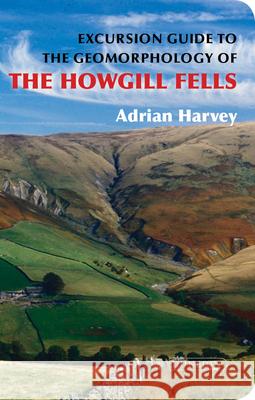Excursion Guide to the Geomorphology of the Howgill Fells » książka
Excursion Guide to the Geomorphology of the Howgill Fells
ISBN-13: 9781780460703 / Angielski / Miękka / 2017 / 128 str.
The Howgill Fells in Cumbria represent one of the most erosionally active landscapes in Britain. The bedrock geology of folded Silurian mudstones is not especially easily seen. The direct effects of Pleistocene glaciation are limited and not as well developed as in the neighbouring Lake District, although glacial meltwaters did have an important impact. However, it is in its post-glacial landscape that the Howgills are exceptional. The steep hillslopes of the headwater valleys are riddled by networks of erosional gullies, many active during the last few thousand years but now stabilized, while others are actively erosional still. The gully systems feed sediment downslope, forming large tributary-junction alluvial fans while elsewhere they create braided reaches within the stream channels. The Holocene sequence of hillslope gully erosion, alluvial fan deposition, and stream terrace aggradation and dissection is exceptionally well exhibited by numerous exposed sections through the sedimentary sequences. The modern active gully systems have been monitored for more than thirty years. The results of this long-term study illustrate two fundamental aspects of process geomorphology: the importance of coupling (i.e. linkages) within the geomorphic system, and the significance of magnitude/frequency relationships. The Howgills form an excellent field laboratory for the study of modern processes and landforms, as well as retaining the evidence for reconstructing the erosion/deposition sequence of the last few thousand years. The book is copiously illustrated with maps, diagrams and colour photographs. Subject: Physical Geography, Geomorphology]











